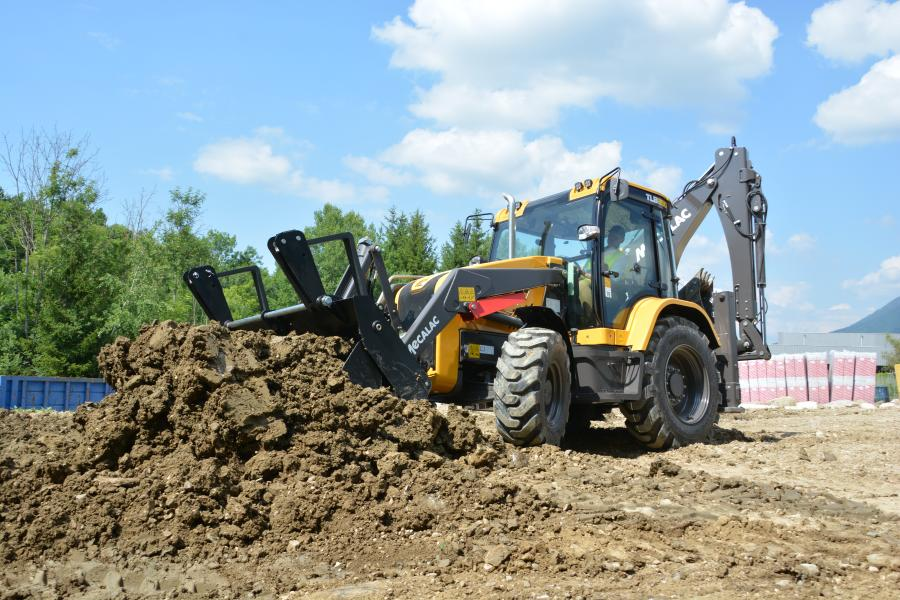Table of Contents
- Introduction to Backhoes and Industrial Tractors
- Key Features to Consider
- Applications in Construction
- Maintenance Tips
- Safety Precautions
- Choosing the Right Equipment
- Latest Innovations
- Conclusion
Backhoes and industrial tractors are essential in construction for their versatility and efficiency. Backhoes excel in digging and excavation, while industrial tractors handle heavy lifting and material transport. Proper selection and maintenance of these machines enhance productivity, safety, and cost-effectiveness in various construction projects.
Introduction to Backhoes and Industrial Tractors
Backhoes and industrial tractors are essential assets in the construction industry. These versatile machines are critical for various tasks, from excavation to material handling. If you want the right equipment for your next project, consider exploring a backhoe auction. Understanding their capabilities and how they can enhance your project is essential for maximizing efficiency and productivity in construction projects. With the right machinery, companies can boost productivity and ensure tasks are completed more accurately and safely.
What makes backhoes and industrial tractors so invaluable in the construction world? Many jobs these robots are meant to complete would take much time and effort to complete by hand. From digging and excavation to lifting heavy objects, their multifunctionality simplifies the workflow and reduces the need for multiple types of equipment. Additionally, their adaptability can lead to significant cost savings over time. Businesses may use this information to make well-informed decisions regarding the required equipment, resulting in more successful project outcomes.
Key Features to Consider
When choosing backhoes and industrial tractors, consider several factors to ensure the best machine for your needs. A robust power engine can handle heavy-duty tasks, boosting productivity and efficiency. The various attachments can extend the machine’s range of functions, such as switching from a bucket to a breaker attachment. Ergonomic controls and operator comfort are crucial, reducing fatigue and accident risk. Additionally, machines with easy maintenance access, such as ground-level service points and removable side panels, can simplify maintenance tasks, reducing downtime and long-term operational costs. These variables improve productivity and safety on the building site, which helps construction projects succeed.
Applications in Construction
Backhoes and industrial tractors are incredibly versatile and can be used for numerous construction tasks. Whether digging foundations, trenching for utility lines, grading, or lifting heavy materials, these machines are up to the task. For instance, during the initial phases of construction, backhoes can be used for site preparation by clearing debris and digging out foundations. This makes them indispensable for various residential, commercial, and infrastructure projects.
Additionally, backhoes can be equipped with specialized attachments such as trenchers, drills, and hydraulic hammers, making them even more adaptable to different job requirements. This versatility can be particularly beneficial for contractors undertaking various projects. Exploring different applications of backhoes in construction can help you utilize these machines to their full potential, thereby increasing overall project efficiency. Understanding the full range of applications can also help in planning and resource allocation, ensuring that each piece of equipment is used effectively.
Maintenance Tips
Regular maintenance is crucial for equipment’s smooth operation and avoiding costly downtime. Conducting daily inspections, including checking fluid levels, tire pressure, and hydraulic systems, helps identify and fix minor problems early. Following the manufacturer’s maintenance intervals, such as oil changes and filter replacements, is also essential. Maintaining detailed records of maintenance activities helps track machine history, identify recurring issues, and plan for future maintenance needs. A consistent maintenance schedule prolongs machinery’s lifecycle and ensures peak efficiency, leading to long-term cost savings and enhanced reliability. This ensures smooth project progress without unexpected interruptions.
Safety Precautions
Operating heavy machinery comes with inherent safety risks, making it crucial to follow stringent safety guidelines. Ensure operators are adequately trained and certified for their specific equipment. Training should cover the operational aspects, emergency procedures, and safety protocols. Additionally, always wear appropriate safety gear, including helmets, gloves, and high-visibility clothing.
Before starting any operation, perform a comprehensive safety check of the machine. This should include inspecting the brakes, lights, and safety mechanisms to ensure they function correctly. Pay close attention to your surroundings to avoid mishaps, especially in cramped or congested work areas. These safety precautions make the workplace safer for all parties by considerably lowering the chance of accidents and injuries.
Choosing the Right Equipment
Selecting the right equipment depends on your specific needs and project requirements. Assess the scale of your projects and the type of tasks you’ll be performing. For example, a backhoe with a powerful engine and multiple attachments would be ideal if your project involves extensive digging and material handling. Conversely, a compact industrial tractor better fit smaller projects or those requiring more maneuverability. A thorough assessment of your needs will enable you to make an educated choice.
Consider the long-term ownership costs, including maintenance, fuel, and potential downtime. Investing in quality machinery that may be more expensive upfront can often save money in the long run by reducing these ongoing costs. For more insights into this process, refer to this comprehensive guide on construction equipment selection. By carefully considering each of these variables, you may make an informed decision that will help your efforts for many years.
Latest Innovations
The construction equipment industry constantly evolves, with innovations enhancing efficiency and safety. Telematics systems provide real-time equipment monitoring, optimizing usage and cost reduction. Hybrid engines, which combine traditional combustion engines with electric power, offer reduced fuel consumption and lower emissions, making them more environmentally friendly. Staying updated with technology trends can give construction companies an edge in projects, enabling them to adopt more efficient and sustainable practices. These innovations can significantly improve productivity and cost savings, making them a worthwhile investment for any construction company.
Conclusion
Backhoes and industrial tractors are vital assets in construction. You can ensure they serve your projects effectively by understanding their features, applications, and maintenance requirements. From robust engines and versatile attachments to ergonomic controls and easy maintenance access, selecting the right machinery can significantly impact your project’s success. Staying informed about safety protocols and the latest innovations will enhance operational success. You can get the most out of these essential devices by utilizing the correct information and resources.
Keep an eye for more news & updates on TimesAnalysis.Com!



